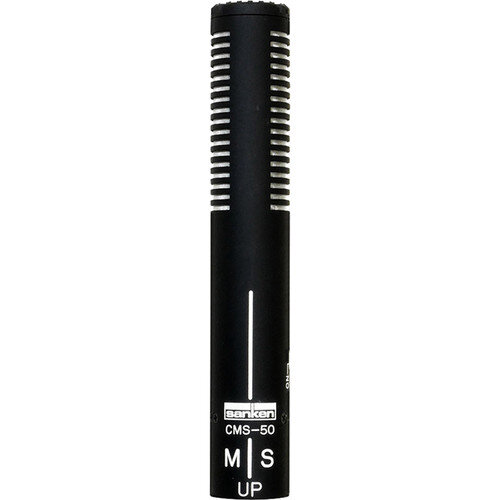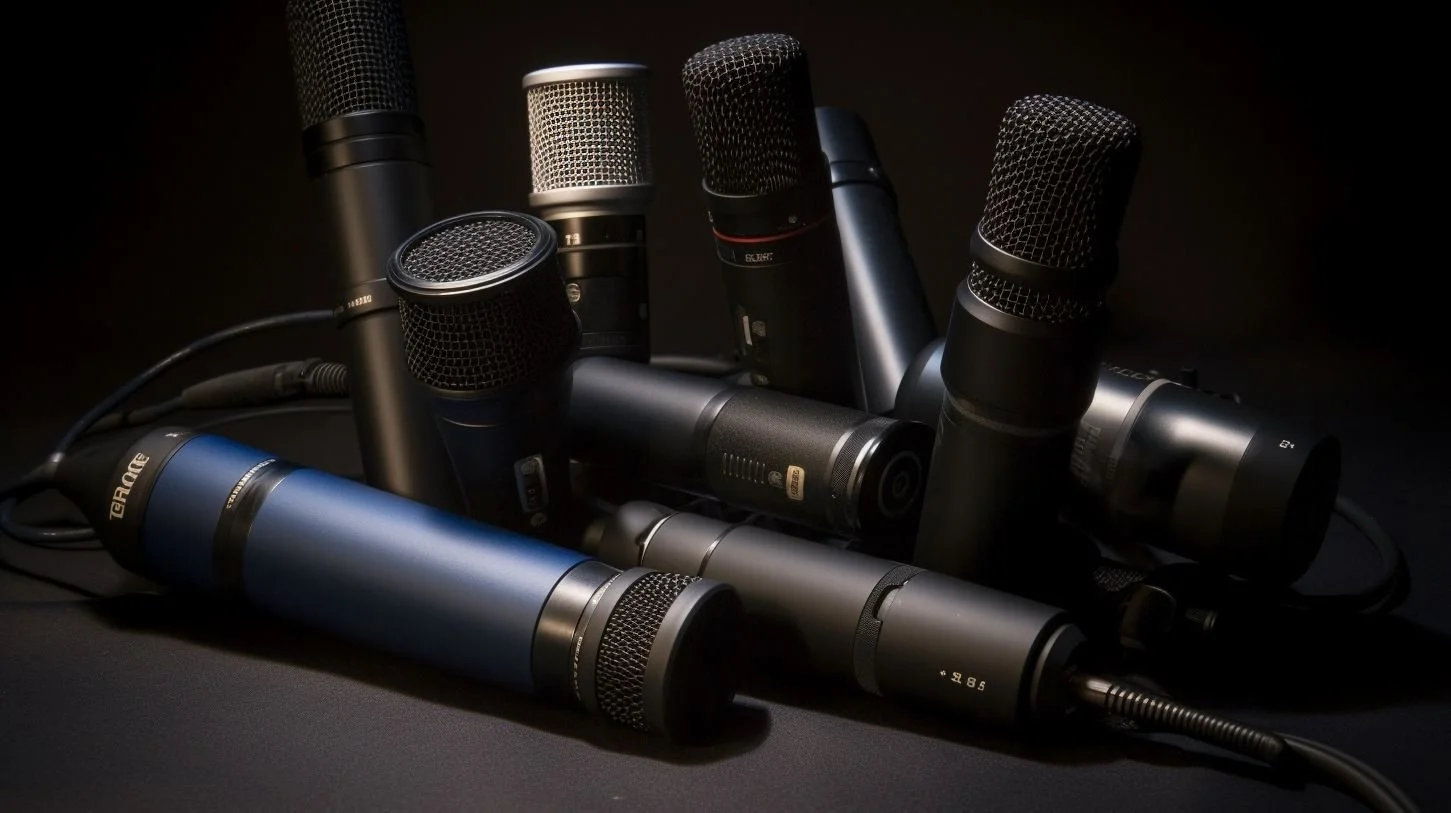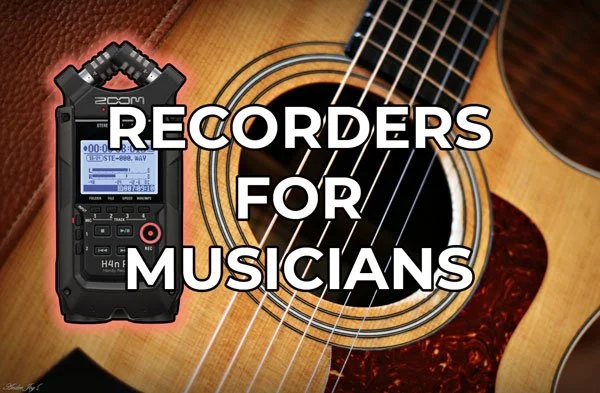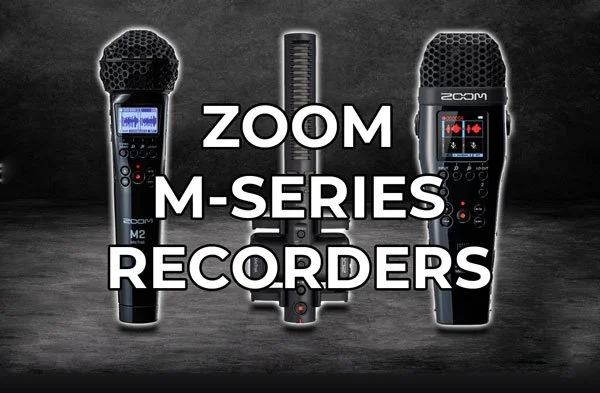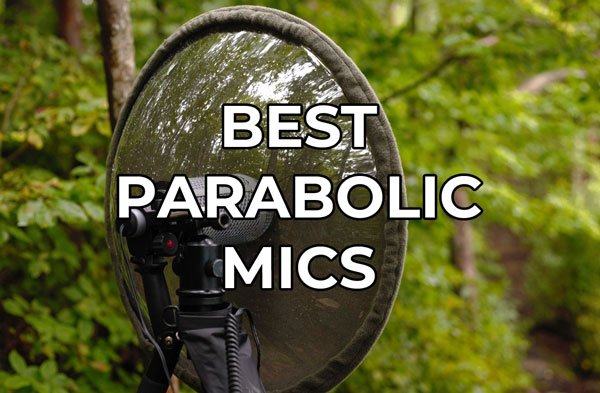Best Stereo Mic For Field Recording (Cost To Performance Comparison)
Learn what a stereo microphone is and which one is best for you in this article!
Stereo microphones have been increasing in popularity over the past few years. To meet this demand, manufactures are giving more attention to developing single-point stereo microphones. In this article we’ll compare every stereo microphone on the market to find out which one is best.
Table of contents:
• The Best Stereo Mic • Stereo Mic Definition • Pros & Cons • Specifications • Comparison Table • My Opinion
Links in this article are affiliate including Amazon Associates. Purchasing through these links will earn me a small commission at no extra cost to you. Thank you for your support!
The Best Stereo Microphone
Audio Technica BP4025
The BP4025 really stands out against its competition. Not only does it offer the lowest noise performance out of any stereo microphone on the market, it is also one of the more affordable options. This combo makes the BP4025 the best performing and best value stereo mic available. Read more
Stereo Microphone Definition
A stereo microphone is a microphone with two capsules. Each capsule records audio independently and together, they produce a stereo signal with just one microphone.
The arrangement and types of capsules used varies between models. Stereo configurations include A-B, X-Y, and M-S (mid-side).
Capsule types include matched pairs of omnidirectional or cardioid capsules, or a cardioid microphone paired with a figure-8 microphone for M-S.
For more information on microphone capsule types, see this article.
Stereo Mic Pros and Cons
Stereo microphones are popular with recordists seeking a compact, affordable, and efficient solution to recording in stereo.
Compact:
Since stereo microphones are effectively two mics in one, your sound bag is much smaller in comparison to carrying two separate microphones. Besides reducing the size of your bag, the weight is also reduced. Further reducing the size of your kit, stereo microphones require less accessories than two separate microphones.
Affordable:
Although the price of stereo microphones varies greatly, they are generally cheaper than buying two equivalent microphones for the same purpose. Also, stereo microphones require fewer accessories than two separate microphones. Not having to purchase a stereo bar, risers, double the wind protection, and extra XLR cables is a big savings.
Efficient:
Since stereo microphones require less gear, they can be setup quickly and easily. Setting up a recording with a stereo microphone is as easy as attaching the mic to a tripod, boom pole, or mic stand and plugging in the cable. Having an efficient setup can help you capture more sounds in general, as more complicated setups with multiple mics can be daunting and demotivating. More specifically, efficiency is a major benefit for impromptu recordings where time is of the essence.
However, these benefits come at a cost. While the ease and simplicity of stereo microphones can be nice, they are not as versatile or as quiet as separate microphones.
Versatility:
For the most part, when it comes to stereo microphones, you get what you get. You are limited to the angle, arrangement, and stereo width the mic comes with, and will have to use it as such for all situations.
M-S stereo microphones are an exception to this because you can control the stereo width by changing the side channel volumes. Also, some stereo microphones have capsules that swivel, giving you the option for X-Y or A-B configurations.
However, these exceptions still don’t come close to the versatility of having two separate microphones. Two microphones can be used for almost any stereo configuration including X-Y, A-B, ORTF, Jecklin disk, and others.
Noise:
Although there are low noise stereo microphones on the market, there are no ultra-quiet options available. The noise performance of stereo microphones is outperformed by separate, ultra low-noise microphones.
Pro:
smaller form factor and less weight
more affordable than purchasing two separate microphones
requires less accessories
easier and faster to setup
Con:
limited creativity
not as versatile
outperformed by separate microphones (self-noise)
Sound Quality Specifications
At the end of the day, all the bells, whistles, and convenience features are useless if a microphone does not record audio that meets a certain standard.
For this reason, when I judge a microphone, I really only care about how well it records sound. Any features beyond that are nonessential. Nonessential features include low pass filters, high pass filters, pads, size, weight, and material.
In my opinion, the most important specification in determining the overall sound quality of a microphone is the signal-to-noise ratio (SNR).
SNR
SNR measures the difference in volume between the signal (the sound you are trying to record) and the noise of the microphone.
Specifically, SNR is calculated by measuring the difference in dB between the microphone’s noise level and a standard 1kHz, 94 dB SPL reference signal. An anechoic chamber is required to accurately measure the noise level of a microphone.
As such, a perfectly quiet microphone would have an SNR of 94 dB. Real-world SNR values range from 65-89 dB (A-weighted).
What does microphone noise sound like?
The noise produced by microphones sounds like a constant hissing sound, similar to white noise. The lower the SNR, the louder this hissing is and vice versa.
What is a good SNR value?
Acceptable SNR values vary depending on the loudness of the signal. “Acceptable” SNR values are when the noise of the microphone either cannot be heard in the final recording, or is so quiet that it is not distracting.
Loud signals (50dB or more) like vehicles, machines, and people talking in close proximity, can overpower the noise produced by most microphones, rendering the hiss inaudible in the final recording. SNR values of 73-75 dB are sufficient for recording these loud signals.
Quiet signals (40dB or less) like natural soundscapes, room tones, and other quiet ambiences are much more difficult to capture without any hiss. At minimum, I recommend a SNR of 78 dB for recording these quiet signals.
Summary:
good SNR depends on the loudness of your signal
73-75 dB SNR good for loud signals 50 dB and louder
78+ dB-A SNR good for quiet signals 40 dB and quieter
use the reference noise level chart to determine how loud your signals are
Comparison Table
Now that we understand how important SNR specifications are for microphones, it’s time to compare different stereo microphones.
For this comparison, I’ve included every stereo microphone with a minimum SNR of 70 dB-A. On-camera stereo microphones were not included since they’re not designed for field recording. The presented SNR value for M-S microphones is an average between mid and side elements.
The far right column ($/SNR) represents the cost per decibel of SNR performance. Prices are subject to change but reflect B&H listings at time of writing.
For additional information, as well as my opinion on each microphone listed below, click the model name of the microphone you would like to read about.
Related Article:
Deep Dive
In this section, we’ll look at more specifications for each microphone. I’ll also provide my opinion and advice for each stereo microphone listed above.
I’ve been a full-time field recordist since 2019 so I know what to look for when it comes to microphones. Over the years, I’ve purchased equipment that disappointed me but taught me a lot in the process. I’d like to share my experience with you so you can make the best purchase for your needs.
Audio Technica AT2022
The AT2022 microphone from Audio Technica is the only stereo microphone with swiveling capsules. This allows you to choose between 90° X-Y and 120° wide stereo positions.
With an SNR of 75 dB-A, the noise performance of the AT2022 is sufficient for recording hiss-free audio under most circumstances. However, microphone noise will be noticeable in quieter settings.
The AT2022 does not take phantom power and runs on one AA battery which lasts for an impressive 500 hours. With the included XLR to 3.5mm cable, the AT2022 can be used with any field recorder.
The AT2022 includes several accessories including a stand clamp for 5/8"-27 threads, an XLR to 3.5mm cable (1.64’"), furry windscreen, one AA battery, and soft storage pouch.
Bottom line: The AT2022 is an affordable stereo microphone with good noise performance and some versatility. It can be used with any recorder since it doesn’t need phantom power and comes with furry wind protection. It is best suited for louder recordings like dialog, musical instruments, and atmospheres 50 dB or more.
Audio Technica AT8022
The AT8022 is an X-Y stereo microphone with a more traditional design than the AT2022.
With an SNR of 75 dB-A, the noise performance of the AT8022 is sufficient for recording hiss-free audio under most circumstances. However, microphone noise will be noticeable in quieter settings.
The AT8022 can be powered via phantom or one AA battery.
Accessories include foam windscreen, XLR to 3.5mm and 5-pin XLR to dual 3-pin XLR cables, soft storage pouch, and a stand clamp for 5/8"-27 threads.
Bottom line: The AT8022 has good noise performance and can be used in confidence for recording dialog, instruments, and louder ambient environments. The accessory package is nice but lacks a furry windscreen necessary for outdoor recordings. For its price, I find it odd that is has a maximum frequency response of 15kHz instead of the standard 20kHz.
Audio Technica BP4025
The BP4025 is the best stereo microphone in my opinion. It has great low-noise performance with an SNR of 80 dB-A and is much less expensive than competitor models.
Phantom power is the only power option and a 5-pin XLR to dual 3-pin XLR cable is included. Also included is a stand clamp for 5/8”-27 thread, a foam windscreen, and a soft storage pouch.
Bottom line: When it comes to stereo microphones, the BP4025 is simply the best option available. Its only drawback is its frequency response of 20 Hz - 17 kHz, which does not capture the full range of human hearing. However, most adults can’t hear sounds above 15 kHz so take that with a grain of salt. Click here to see if you can hear above 15kHz.
Audio Technica BP4029
The BP4029 is the M-S version of the BP4025. Its shotgun-style design makes it extremely compatible with blimps, deadcats, and shock mount systems.
With an SNR of 70 dB-A, the BP4029 is best suited for loud soundscapes like musical groups, venues, and other loud environments.
Bottom line: If you’re looking for an affordable M-S stereo microphone for recording bands, music venues, and urban environments, the BP4029 is a good fit.
Sanken CMS-50
The Sanken CMS-50 is one of the most compact microphones on the market. At only 5.4” in length, the CMS-50 can be mounted on a camera with a short lens and still be out of frame.
Also, at 4.6 oz, the CMS-50 is insanely lightweight, making it a great option for boom pole operators on sets requiring M-S.
With an SNR of 74 dB-A, the CMS-50 is capable of capturing noise-free audio in most environments.
Accessories include a vinyl case and foam windscreen.
Bottom line: The Sanken CMS-50 is an ultra compact M-S stereo microphone with good noise performance and tight polar patterns. It is perfectly suited for shoots the require a short and lightweight stereo microphone for all-day use on a camera or boom pole.
Sennheiser MKH 418S
The Sennheiser MKH 418S is the best performing M-S stereo microphone.
With an average SNR of 76 dB-A, it is capable of hiss-free recordings in most situations.
The shotgun-style design of the 418S makes it extremely compatible with blimps, deadcats, and shock mount systems.
As a member of the “MKH” series from Sennheiser, the 418S is a RF biased condenser microphone, giving it superior humidity and moisture resistance.
Bottom line: The MKH 418S is the lowest noise M-S stereo microphone available. It is capable of capturing hiss-free recordings in most environments and its RF design makes it well suited for outdoor recordings and other humid environments.
Rode NT4
The Rode NT4 is the second best performing stereo microphone behind the BP4025.
At 78 dB-A SNR, the NT4 is exceptionally quiet and capable of recording hiss-free audio in all but the quietest environments. To get an idea of how this mic performs in quiet environments, listen to the recording below made with the NT4.
Bottom line: The NT4 is a very low noise stereo microphone capable of recording the quiet sounds of nature. However, its large diameter and awkward capsule design create compatibility issues with windscreens and shock mounts.
For this reason, I recommend the BP4025 over the NT4. The BP4025 is quieter by 2 dB SNR, more traditionally sized, and at a similar price point.
Shure VP88
Similar to the BP4029, the VP88 from Shure is an affordable, stereo microphone in M-S format.
At 70 dB-A, the VP88 is capable of hiss-free recordings of soundscapes like musical groups, venues, and other loud environments.
The VP88 accepts phantom power or a 6v camera battery.
Bottom line: The VP88 has nearly identical specifications to the BP4029. Both have SNR measurements of 70 dB-A and similar matrixing modes offering independent M-S channels or internal stereo matrixing with variable stereo-width controls.
I would go with the BP4029 unless you absolutely need battery power support. The BP4029 is smaller and of traditional shotgun microphone design making finding properly fittings accessories much easier.
Final Thoughts
After researching the market for the best stereo microphone, the Audio Technica BP4025 takes the cake. It has the lowest self-noise and is one of the more affordable options.
If M-S audio is a requirement for your job or something you’d like to play around with, I recommend the Audio Technica BP4029 for louder soundscapes and especially musical instruments and performances. If your M-S needs require a lower noise floor, the Sanken CMS-50 is an attractive option.
Support Acoustic Nature
If you enjoyed this post and would like to help support Acoustic Nature, please consider "buying me a coffee" or becoming a Patreon with the buttons below.
As a thank you for your support, Patreon supporters receive a copy of Field Recording For Beginners, exclusive access to the full Behind The Sounds video series, nature sound library downloads, and more.
If you are unable to support the site financially, please share this post with others, or leave a comment below letting me know you enjoyed this post! Both are free and help the website grow. Thank you ♫
Thanks for reading,
-Jared








